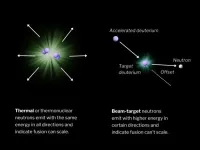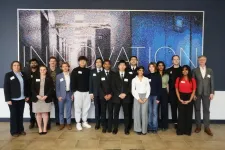The California Institute for Regenerative Medicine has awarded a $6 million grant to USC investigators pioneering a new first-of-its-kind genetic therapy for glioblastoma, a severe form of brain cancer. The treatment would be the first gene therapy for glioblastoma to use a novel, more precise delivery system that is less likely to harm non-cancerous cells.
Glioblastoma is an aggressive and fast-growing cancer originating in the brain that occurs primarily in adults and has no known cure. Patients diagnosed with this type of tumor have a five-year survival rate of just 5 percent. The cancer’s location—in the sensitive brain—combined with its heterogeneity make treatment notoriously difficult. Tumor composition varies widely across patients and even within individual tumors as abnormal cells continuously mutate.
“The personalized treatment you hear about for this type of cancer often feels like a game of whack-a-mole,” said principal investigator David Tran, MD, PhD, USC associate professor of neurological surgery and neurology, division chief of neuro-oncology at the Keck School of Medicine of USC and co-director of the USC Brain Tumor Center. “By the time you’ve sequenced a patient’s tumor, identified all its mutations, personalized a treatment plan, and developed the therapy, the tumor you’re treating is no longer the same tumor. There's a new set of mutations. So, you wind up chasing your tail.”
The three-year grant, led by USC in collaboration with members of the Zolotukhin Lab at the University of Florida, builds on three advances the team has made towards a novel glioblastoma treatment, with the goal of moving it closer to clinical trials.
New drug targets
Tran’s team developed a new AI technology to analyze large genetic data sets and identify “master regulators” within glioblastoma—key genes that define a brain tumor and are essential for its survival. Of the nine master genes they found, seven were developmental, or typically active only in early fetal development, where they support rapid growth before becoming dormant.
“Tumor cells are smart,” Tran said, who is also a member of the Tumor Immunology and Microenvironment Program at the USC Norris Comprehensive Cancer Center. “They go back and pull these developmental genes out from dormancy and use them to fuel their own uncontrollable growth.” Tests in his lab showed that targeting these developmental genes with anti-cancer therapy led to tumor collapse. “You only need to deplete a few of these master genes,” Tran said. “Once they’re gone, the cancer doesn’t stand a chance.”
New delivery vehicle
In addition to identifying new targets, researchers have discovered a promising vehicle for delivering therapy to the cancer using a common virus known as AAV (adeno-associated virus). While viruses serve as vital tools in many gene therapies, when it comes to glioblastoma they typically lack precision, infecting not just the diseased cells but also surrounding healthy brain cells.
“Too often, these viruses have a carpet-bombing effect,” Tran said. “That’s not ideal for brain cancers.”
The USC team created a library of approximately 10 billion different variants of these AAV viruses and exhaustively screened them, looking for any viruses capable of infecting glioblastoma cells without infecting normal brain tissue. One candidate, a virus known as T6, fit the bill: in mice carrying human glioblastoma tumors, this potent virus demonstrated a high preference for infecting cancer cells and little else. When used to deliver a targeting drug already identified by Tran’s team, the virus showed cure rates approaching 70 to 90 percent in these mouse models. “That’s almost unheard of,” Tran said. CIRM funding will enable the team to prepare this new delivery vehicle and drug target for clinical trials.
Enhanced tumor mapping
Patients with aggressive brain tumors typically undergo a procedure called conduction-enhanced delivery (CED), where a surgeon implants a catheter into the tumor to deliver the gene therapy and cellular treatment. This clinical process is ripe for improvement.
“Historically, CED has been done somewhat blindly,” Tran said. “After initial imaging to identify the tumor’s coordinates, the surgeon inserts the catheter into the middle of the tumor and hopes that it will be effectively delivered to the entire tumor. But tumors are more complicated than that.”
If the catheter hits a “blind pouch” in the tumor, the medication remains stuck there and can’t flow outward. To tackle the problem, USC investigators and collaborators have started engineering a new computational method to map the tumors’ flow patterns, which function like riverbeds. This mapping will provide surgeons with enhanced guidance for optimal catheter placement and maximum drug diffusion. The CIRM grant will support further improvements to the technology, which Tran hopes will make its way into clinical settings. “The goal is to safely deliver the highest concentration of effective therapy to the patient,” he said.
The grant team, which includes USC neuropathologists, computational biologists, and neurosurgeons, will collaborate with the USC/CHLA cGMP facility. Designed to manufacture cell and gene therapies under the Food and Drug Administration’s current good manufacturing practice (cGMP) standards, the facility will ensure that all treatment products and protocols meet human safety and efficacy standards. The researchers also plan more preclinical testing to reconfirm the results achieved in laboratory models.
For Tran, it’s a profoundly hopeful moment. “This is the best time to be in this field as a researcher and as a clinician,” he said. “When I started seventeen years ago, I spent most of my time telling patients to get their affairs in order. Today, we’re talking about prolonging survival. In the next five to ten years, we’re going to see major changes in what a diagnosis of glioblastoma means for patients.”
END





